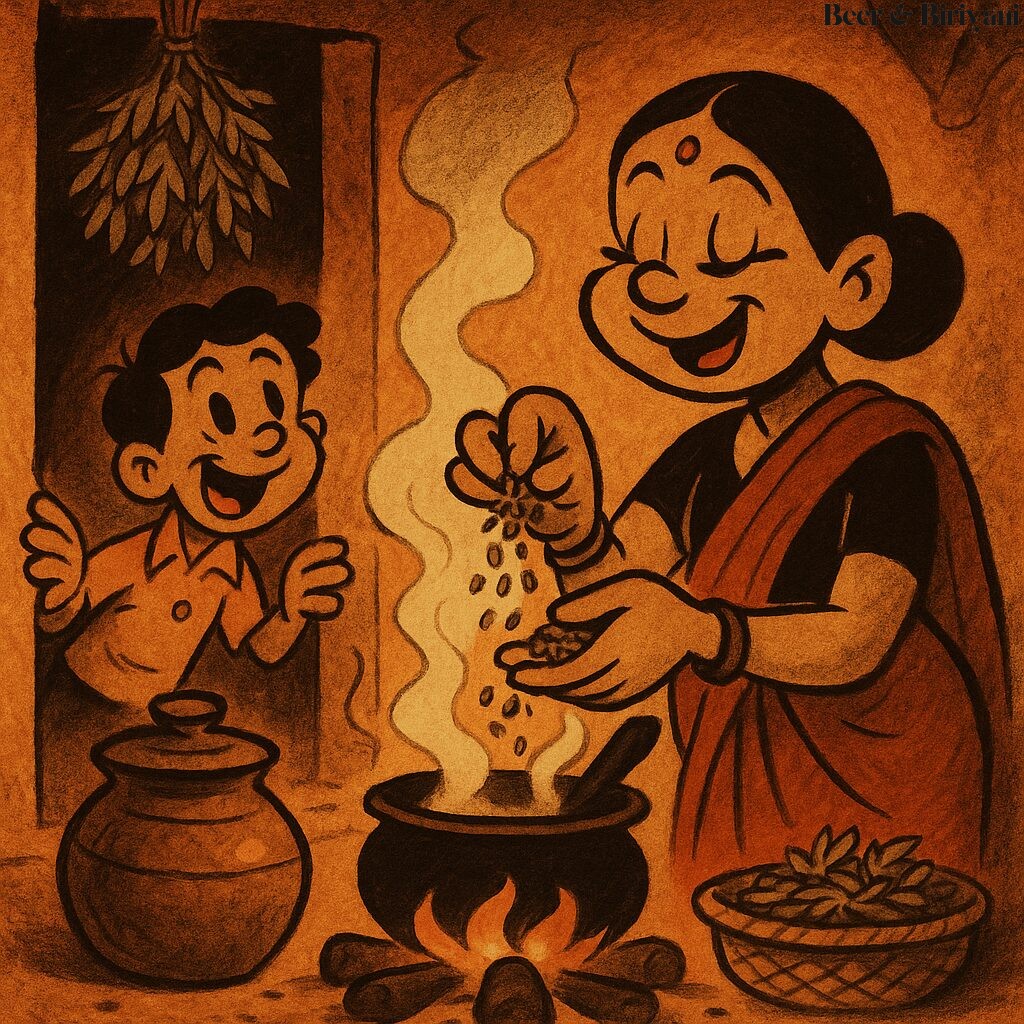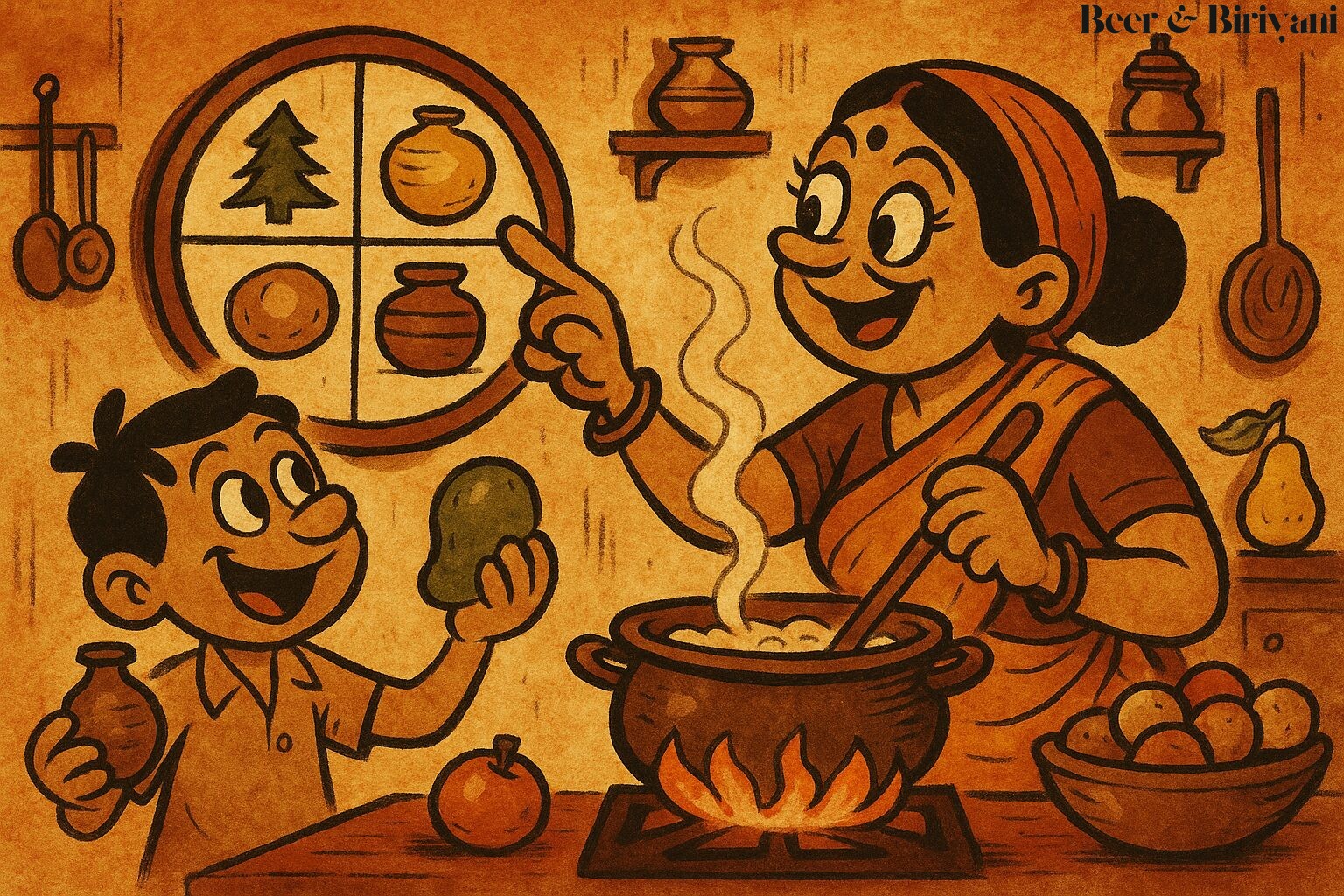Open a packet of kasuri methi and take a whiff. That dry, leafy scent that hits you? That’s not just an herb. That’s winter in North India. It’s a roadside paratha stall steaming at sunrise. It’s your aunt’s methi matar malai. It’s a smoky kitchen on a cold morning where someone, somewhere, is still tearing dried fenugreek leaves between their fingers like it’s a sacred ritual. Which, honestly, it is.
Kasuri methi—dried fenugreek leaves named after the region of Kasur (now in Pakistan)—is one of those ingredients that doesn’t just season food. It haunts it. In the best way possible. A pinch stirred into hot ghee or crumbled into a cream-based curry, and suddenly you’re eating something that smells like both a grandmother’s memory and a farmer’s reward. It doesn’t scream for attention. It murmurs poetry in your mouth.
The Afterlife of a Winter Crop
Fresh methi—green, bitter, and stubborn—is a winter staple across North India. But drying it? That’s preservation with intention. That’s what turns seasonal bounty into year-round luxury. The leaves are washed, shade-dried, and then stored in tightly packed tins where they wait to add their distinct magic to saag, shahi paneer, or even a homely dal fry.
And while plenty of people have opinions about fenugreek’s agricultural uses—as a soil fixer, a digestive, a medicinal leaf—most of us just know that it smells like something worth slowing down for. It’s the smell of food that was made deliberately. Not in a hurry, not from a packet, not for Instagram. Just real, cozy food you eat sitting down, ideally with socks on.
Smell First, Then Memory
My first conscious experience of kasuri methi was at a dhaba off the highway to Jaipur. The cook tossed a handful into a sizzling steel kadhai like it was fairy dust. That one flourish lifted the whole dal tadka from everyday to unforgettable. It was smoky. Slightly bitter. Complex. It smelled like dry fields and charcoal fires. And somehow, even though I’d never lived in Punjab, it made me homesick for it.
Back in Austin, when I miss home (or winter, or parathas I didn’t have to make myself), I crumble some kasuri methi into butter and melt it over potatoes. Or swirl it into tomato gravy. The apartment fills with that dry-leaf perfume and suddenly the walls don’t feel so far from Delhi anymore. Just warmer. Slightly confused about the weather. But comforting nonetheless.
Kasuri Methi Isn’t an Afterthought
The funny thing is, most recipes list kasuri methi at the very end—often casually. “Add a pinch of kasuri methi,” they say, as if you just happen to have a metal tin full of it next to your stove. But those who know, know. That final pinch isn’t just flavor. It’s closure. It’s like the last stroke in a painting or the final line of a ghazal. Without it, something feels unfinished, unresolved, emotionally undercooked.
And when you rub it between your palms and add it to your dish, it’s not just seasoning. It’s interaction. It’s tactile. A small, dusty meditation before you eat. Like folding your hands in gratitude before a meal—except it also tastes amazing.
More Than a Leaf
In my mother’s kitchen, kasuri methi was kept in a reused Horlicks jar—tightly sealed and suspiciously full no matter how often she dipped into it. It showed up in unexpected places: in thepla dough, sprinkled over kadhi, hidden in aloo sabzi. It added bitterness, yes—but not the kind that overwhelms. It added character. Like a sharp-tongued relative you grow to admire with age.
Some flavors announce themselves. Others linger. Kasuri methi is the latter. After you’ve eaten, long after you’ve washed the dishes and opened the windows, its memory stays. In your hands. In your hair. In your dreams, if you’re lucky.
So the next time you finish a curry and something feels missing, don’t reach for chili or salt. Try a pinch of kasuri methi. You might not just fix the dish—you might remember something beautiful.
Born in Mumbai, now stir-frying feelings in Texas. Writes about food, memory, and the messy magic in between — mostly to stay hungry, sometimes just to stay sane.












